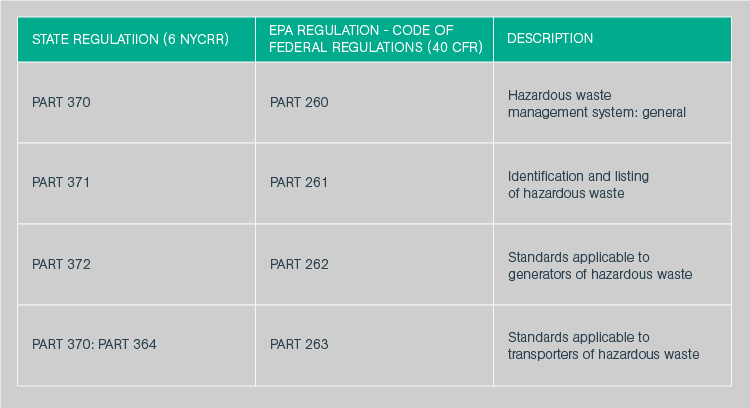How to Dispose of Medical Waste in Rochester, New York

If you are a medical waste generator in the Empire State, do you know how to dispose of medical waste in Rochester, New York? Proper handling and disposal of medical waste is serious, not only from a safety standpoint, but from a financial one. Understanding the best methods for compliant, sustainable, and affordable disposal when it comes to handling medical waste from hospitals, outpatient centers, or other medical facilities will stand any healthcare practice in good stead.
TALK TO A MEDICAL WASTE EXPERT IN ROCHESTER TODAY
TOPICS WE WILL COVER:
1 / How Is Medical Waste Defined
2 / Do you know what to do with your Medical Waste?
3 / Disposal of Hazardous Waste in Rochester
4 / About Tracking and Disposal
5 / Turn to Daniels Health for Resources
 How Is Medical Waste Defined
How Is Medical Waste Defined
In Rochester, New York and other cities throughout the state, regulated medical waste is defined within five specific categories:
- Human pathological wastes
- Human blood and blood products
- Cultures and stocks of infectious agents
- Sharps
- Animal waste
Note: New York State’s Commissioner of health may also determine other specific items as regulated medical waste.
Do you know what to do with your Medical Waste?
 New York, like other states throughout the country, produces hundreds of thousands of tons of regulated medical waste each year. Roughly 40,000 medical waste generators, ranging from hospitals to long-term care centers, outpatient clinics, veterinary facilities, and yes, even tattoo parlors are found throughout the state. That’s a lot of medical waste, so it’s important to segregate, treat, and dispose of it properly.
New York, like other states throughout the country, produces hundreds of thousands of tons of regulated medical waste each year. Roughly 40,000 medical waste generators, ranging from hospitals to long-term care centers, outpatient clinics, veterinary facilities, and yes, even tattoo parlors are found throughout the state. That’s a lot of medical waste, so it’s important to segregate, treat, and dispose of it properly.
Whether you’re an administrator, a CEO, a nurse, physician or janitor or housekeeper that works with, in, or around medical treatments, procedures, or surgeries, you need to know the regulations regarding surgical waste, biohazard waste, and pathological waste, just among the few of several medical waste streams that healthcare providers deal with on a daily basis.
A number of agencies are responsible for providing guidelines for segregation, handling, storing, transportation, and ultimate disposal of medical waste in the state of New York. Do you know who they are? On a federal level, you have the:
- Food and Drug Administration (FDA)
- Environmental Protection Agency ( EPA)
- The Resource Conservation and Recovery Act (RCRA)
- US Public Health Services
- The Clean Air Act
- The Comprehensive Environmental Response, Compensation, and Liability Act
You’ve also got to deal with guidelines from state regulations as well as recommendations from the CDC and other health sectors and governmental policy makers. You should also be aware of New York’s requirements as per the New York State Department of Transportation.
When it comes to New York state regulations, turn to New York State’s Department of Environmental Conservation, which provides specific guidelines for dealing with medical waste. For example, regulated medical waste treatment and disposal in the state requires a permit. Such waste must also be properly treated prior to disposal with a compliant and authorized solid waste management facility. This process destroys potentially dangerous organisms from ending up in landfills. Treated medical waste (including hazardous), when accompanied by a certificate of treatment form, can be disposed of by authorized solid waste management facilities within the state.
What kind of disposal options are found in New York? A few include autoclaving, incineration, or other alternative technologies such as chemical disinfection or microwave. Any method for disposal or treatment must meet New York State performance standards.
Note: Sharps must be destroyed prior to disposal.
Disposal of Hazardous Waste in Rochester
Is another cities throughout Monroe County and throughout New York State, disposal of hazardous requires specific handling. Turn to the state’s hazardous waste codes found under 6 NYCRR Parts 370-376, otherwise known as the “Part 370 series”. Familiarity with these codes based on state regulations as well as EPA regulations found under the U.S. Code of Federal Regulations (40 CFR) are essential. You can’t pick one or the other. They both need to be followed.
For example:

Review the aforementioned state and equivalent federal hazardous waste management regulations. Review all parts and subparts. Medical waste generators looking to properly dispose of medical waste in Rochester, New York and in other counties in the state will find interim and final status documentation for owners and operators of hazardous waste treatment, storage, and disposal facilities. These guidelines also provide information on storage and disposal facility permit requirements and standards for specific types of hazardous waste as well as land disposal restrictions and treatment standards.
Ensure that you and your staff know the regulations regarding storage, such as that some types of waste can’t be stored more than 30 days, or the time limits of storage for facilities and clinical laboratories.
Be aware of labeling issues. For example, any sharps or fluid container that is transported off-site for treatment and disposal must include the generator facility contact information.
 About Tracking and Disposal
About Tracking and Disposal
Rochester, New York (and other cities throughout the state) should also follow the guidelines of the Division of Materials Management (New York State Department of Environmental Conservation). These guidelines require that medical waste generators fill out medical waste tracking forms prior to off-site transportation of medical waste. One copy is kept by the medical waste generator, another by the destination facility, and yet another by the transportation company.
The rules for proper disposal of medical waste in Rochester and other communities throughout the state are detailed and numerous. Daniels Health understands that it can be confusing and time-consuming to read and review all the rules, but there is no excuse for not knowing them, whether you’re a small or large medical waste generator.
Fines can range anywhere from $5,000-$70,000 per violation, per day until issues are rectified. Also be aware that in Rochester and throughout the state, the RCRA and the EPA has authority to fine not only for each and every compliance breach, but for every individualized infraction within that breach process.
Make no mistake – penalties for noncompliance are extremely severe. The New York Department of Environmental Conservation (DEC) has the authority for any and all storage, treatment and destruction processes that are located on site that are also not under Department of Health jurisdiction. They also have authority for off-site transport of regulated medical waste generators and tracking, so make sure that you know and understand the rules.
Guidance documents are easy to find under www.dec.ny.gov, so again, no excuses!
Turn to Daniels Health for Resources
Daniels Health provides the knowledge and resources you need to maintain compliance with federal and state regulations for medical waste segregation, storage, and disposal. We provide solutions for different medical waste streams as well as sharps disposal or reusable containers for all types of medical waste. Our sustainable products and methods not only save money, but reduce the volume of medical waste that heads to landfills. It’s a win-win for everybody. For more information on how we can help you, call us today.
Let's Talk!
Your time is valuable, and we don’t want to play hard to get. You can either phone us directly on the details listed on our contact page, or feel free to fill out this short form and one of our team members will get back to you as quickly as possible.
